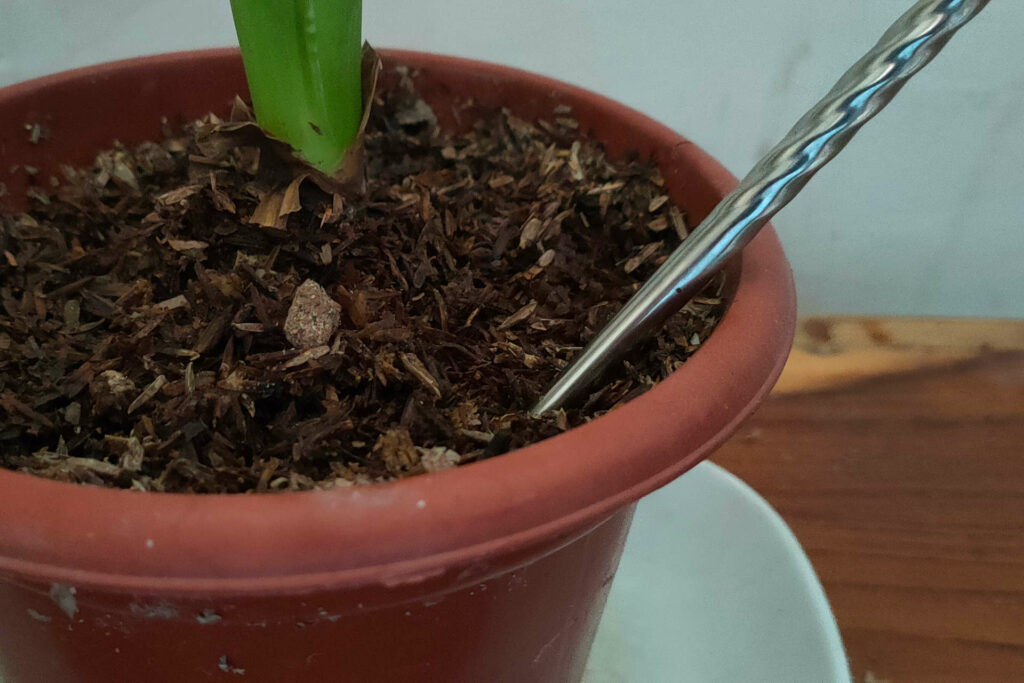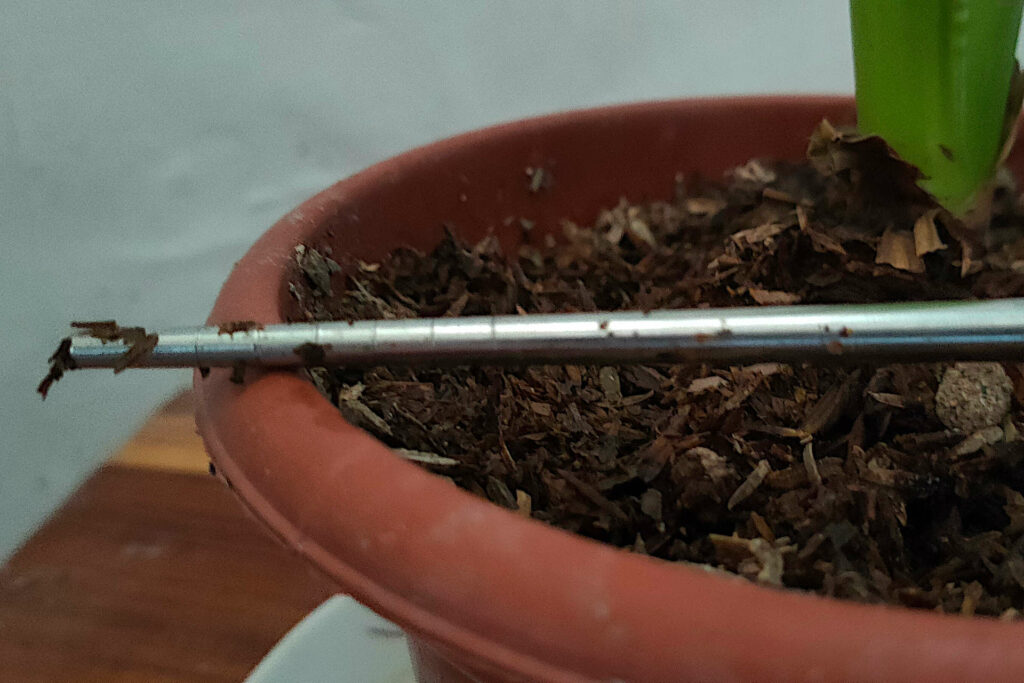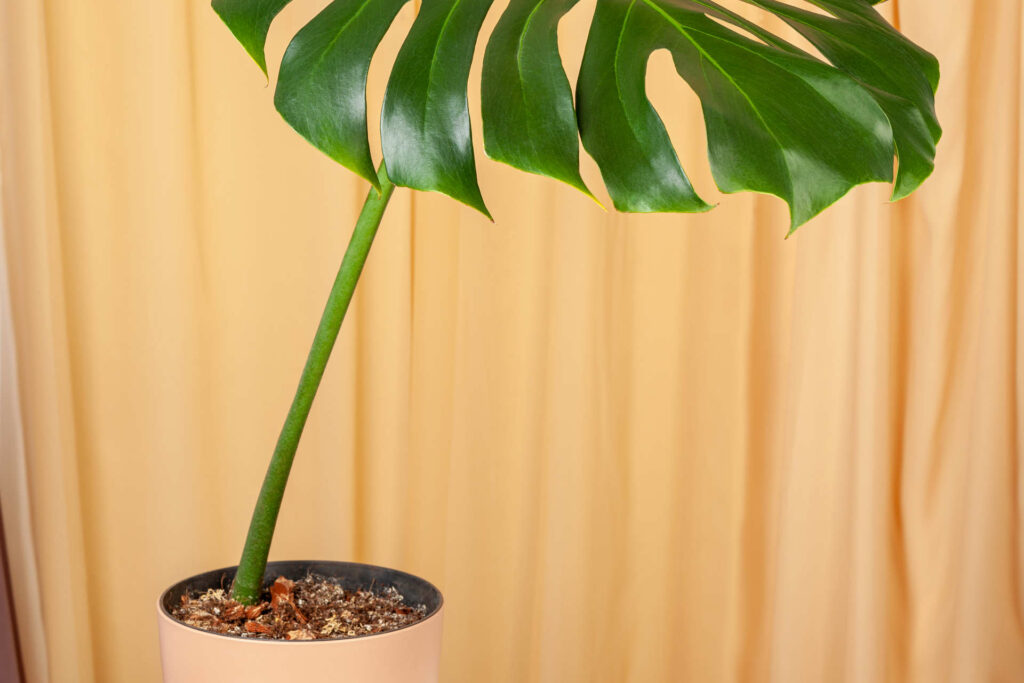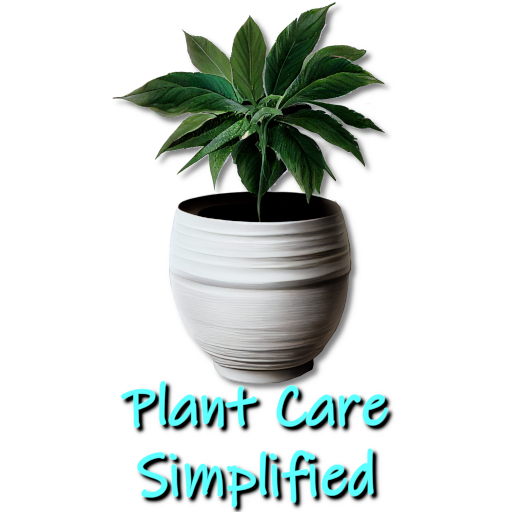How often should I water my Monstera plant? The Ultimate Guide to Watering Your Monstera Plant
Kim is passionate about helping people create beautiful, healthy indoor spaces that are filled with plants. Kim believes that plants make us happier, healthier human...
- Monstera plant benefits from deep watering every 7-10 days.
- Deep watering" giving your plant a larger amount of water less frequently is the preferred way of watering.
- Overwatering a Monstera plant can lead to root rot and other issues, while underwatering can cause the plant to become stunted.
- Using a well-draining potting mix is crucial for a healthy Monstera plant, as it prevents waterlogging and root rot.
Monstera plants, also known as Swiss Cheese Plants, are a popular choice of indoor houseplant due to their large, striking leaves and easy care requirements. However, one area where many new plant parents struggle is with watering.
This article will delve into the best watering practices for Monstera plants, including the differences between frequent watering and deep watering, how to test moisture levels in the soil/potting mix, and how light levels can affect the amount of water your Monstera requires.
Frequent Watering vs Deep Watering

One of the key concepts to understand when watering your Monstera plant is the difference between frequent watering and deep watering. Frequent watering refers to giving your plant small amounts of water regularly, while deep watering involves giving your plant a larger amount of water less frequently.
How often should I water my Monstera plant?
While Monstera plants do not need to be watered as frequently as other houseplants, they do benefit from a deep watering every 7-10 days. This allows the soil to fully absorb the water, reaching the roots and promoting healthy growth.
Watering Frequency and Adjustment:
A Monstera plant should be watered when the top inch of soil feels dry to the touch. This can vary depending on the size of the pot, the type of soil, and the humidity and temperature of the environment.
It should be noted that during the active growth stage, a Monstera plant may require watering more frequently than when it is dormant. To determine how often to water your Monstera, it's best to stick your finger into the soil and check the moisture level. If it feels dry, it's time to water.
How to Test Moisture Levels in the Soil/Potting Mix

To ensure that you provide your Monstera plant with the right amount of water, it's important to test the moisture levels in the soil/potting mix. There are a few different ways to do this:
- Using a metal knitting needle or chopstick: Stick the needle or chopstick into the soil, and if it comes out with soil on it, then the soil is still moist. If it comes out clean, the soil is dry.
- Using a finger: Stick your finger into the soil up to your first knuckle, and if it feels damp, then the soil is still moist. If it feels dry, the soil is dry.
- Moisture Meter: A moisture meter is a handy tool that will give you a digital reading of the moisture levels in the soil.
Using a Moisture Meter:
A moisture meter is a useful tool for determining the soil moisture level in your Monstera's pot. To use a moisture meter, simply insert the probe into the soil and check the reading. The ideal moisture level for a Monstera plant is around 60-70%.
Keep in mind that the moisture level can vary depending on the size of the pot, the type of soil, and the environment. A moisture meter can help you to get a better understanding of the moisture needs of your Monstera plant, and make it easy to adjust your watering habits accordingly.
Potting Mix and Drainage:
Using a well-draining potting mix is crucial for a healthy Monstera plant. The mix should include a blend of peat moss, perlite, vermiculite, or coconut coir. This will ensure that the soil drains well, preventing waterlogging and root rot. In addition, it's important to have proper drainage in the pot to allow excess water to escape. This can be achieved by having drainage holes in the bottom of the pot or by using a potting mix with a higher percentage of perlite or coarse sand.
Signs of Over or Under Watering:
Overwatering a Monstera plant can lead to root rot and other issues, while underwatering can cause the leaves to droop and the plant to become stunted. Some signs of overwatering include yellowing leaves, mushy or odorous soil, and a lack of new growth.
Signs of underwatering include dry, crisp leaves and an overall wilted appearance. If you suspect your Monstera is being over or under-watered, it's important to adjust your watering habits accordingly.
How Pot Selection Affects a Monstera’s Water Requirements:

Choosing the right pot for a Monstera plant is crucial for its health and growth. A pot that is too small can limit the plant's root system, while a pot that is too large can lead to over-watering and other issues. A good rule of thumb is to choose a pot that is only slightly larger than the root ball of the plant, allowing for room for growth without excess soil.
Additionally, it's important to ensure the pot has adequate drainage holes to allow excess water to escape and prevent root rot. A drainage tray can also be used to catch excess water and protect surfaces.
It's also important to remember that terracotta pots are porous and can dry out faster than plastic pots, which retain moisture for a longer period. Therefore, you should adjust the watering frequency accordingly.
Best Watering Techniques
When it comes to watering your Monstera plant, there are a few different techniques to choose from.
- Wick watering: This involves using a wick, such as a piece of string or yarn, to draw water from a container up into the soil. This can be a good option if you're going away for a few days and want to ensure that your plant stays hydrated.
- Bottom watering: This involves placing the pot on a tray of water, allowing the soil to absorb water from the bottom up. This can be a good option if you're having trouble getting the water to reach the roots.
- Top watering: This is the most common method of watering, where water is poured directly into the soil.
Watering Techniques:
When watering a Monstera plant, using a watering can or a hose with a fine nozzle is essential to avoid disturbing the soil or the roots. Water should be applied to the soil, not the leaves, as this can cause leaf damage. The water should be applied slowly, allowing it to soak into the soil and reach the roots.
It's also important to avoid over-watering, as this can lead to root rot and other issues. A good rule of thumb is to water until the soil is evenly moist but not waterlogged.
Best Time of Day to Water Monstera Plant:
When it comes to watering your Monstera plant, timing is just as important as the amount of water you use. The best time to water your plant is early in the day or late in the afternoon, when the temperature is cooler and the sun is less intense. This allows the water to be absorbed by the roots before the day's heat causes it to evaporate.
Watering your Monstera plant in the evening can lead to the leaves remaining wet overnight, increasing the risk of fungal or bacterial infections.
Long-term Watering Habits:
The long-term watering habits you establish for your Monstera plant will significantly impact its overall health and growth. Consistency is key when it comes to watering your Monstera plant. It's important to establish a regular watering schedule and stick to it as much as possible. Avoid letting the soil dry out completely and over-watering, which can lead to root rot.
The watering frequency will also depend on factors such as the size of the pot, the type of potting mix, and the humidity levels in your home. As the plant grows, it may require more or less water than it did when it was smaller.
It's also important to be mindful of the changing seasons and adjust your watering schedule accordingly. In winter, when the days are shorter and the plant is dormant, it will require less water than it does during the growing season.
How Light Levels Can Affect the Amount of Water Your Monstera Requires
Light levels can also play a role in how much water your Monstera plant requires. The amount of light a plant receives can directly affect its water requirements. In general, a Monstera plant that receives more light will require more water than one that receives less light.
This is because more light means more photosynthesis, which in turn means more water is needed to support the plant's growth. It's also important to note that during the winter months when the days are shorter, a Monstera plant may require less water as it is in a dormant stage.
In practical terms, this means that in the winter, when days are shorter, your plant will require less water because it is not actively growing. During the summer and spring, when the days are longer, and the plant is in active growth, it will require more water. Be sure to monitor the moisture levels in the soil during these seasons, and adjust your watering accordingly.
Our Experience:
In general, Monstera plants, whatever the variety, are fairly straightforward pants to water. If you follow the best watering practices we have laid out, you shouldn't have too many problems, and you'll be able to keep it healthy and thriving.
Watering deeply every 7-10 days should be adequate but monitor light levels to adjust the amount of water your plant requires and the moisture levels. The one deviation to watch out for is when the Monstera enters its peak growing season, and you may need to increase watering and fertilizing slightly.
Kim is passionate about helping people create beautiful, healthy indoor spaces that are filled with plants. Kim believes that plants make us happier, healthier human beings, and she loves sharing her knowledge with others so they can experience the joys of plant care for themselves. <a href="https://plantcaresimplified.com/kim-marson/">Read more</a>
More Posts